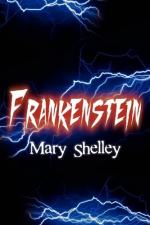|
This section contains 8,349 words (approx. 28 pages at 300 words per page) |

|
SOURCE: "Reading the Symptoms: An Exploration of Repression and Hysteria in Mary Shelley's Frankenstein," in Studies in the Novel, Vol. XXV, No. 2, Summer, 1993, pp. 152-69.
In the excerpt that follows, Hobbs contends that Mary Shelley's Frankenstein is a character afflicted with a "female malady" brought on by his repression of stereotypically feminine traits.
Why isn't one a beastly girl and privileged to shriek?
Ford Madox Ford, Parade's End, 1925
Critics of Mary Shelley's Frankenstein have articulated a multiplicity of gendered characteristics in her protagonist, Victor Frankenstein. Those in the tradition of Ellen Moers interpret the novel as a birth myth, reading Victor as a life-giving mother.1 These studies contrast with works focusing on the character's appropriation of the female realm, which find him to be a Promethean usurper "engaged upon a rape of nature."2 And finally, Shelley's work has been mined for evidence that it blurs cultural definitions of...
|
This section contains 8,349 words (approx. 28 pages at 300 words per page) |

|


